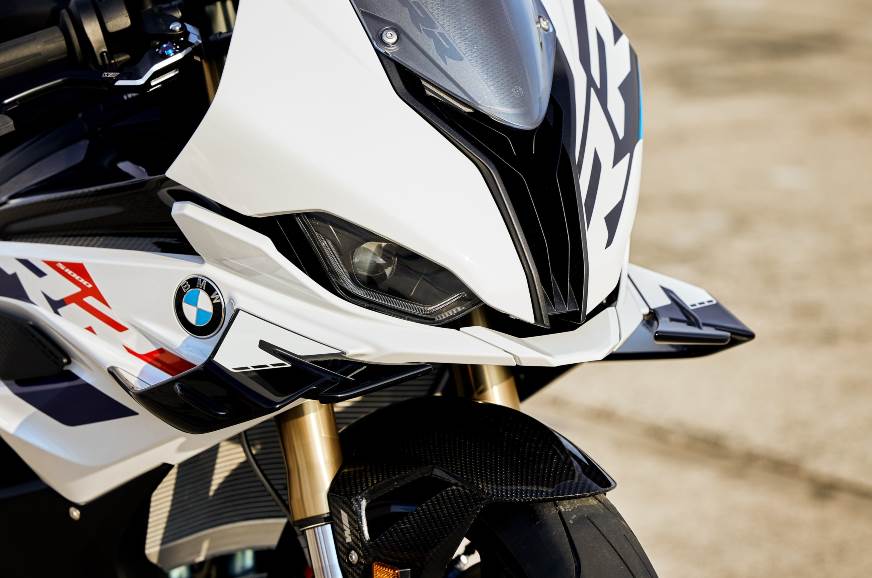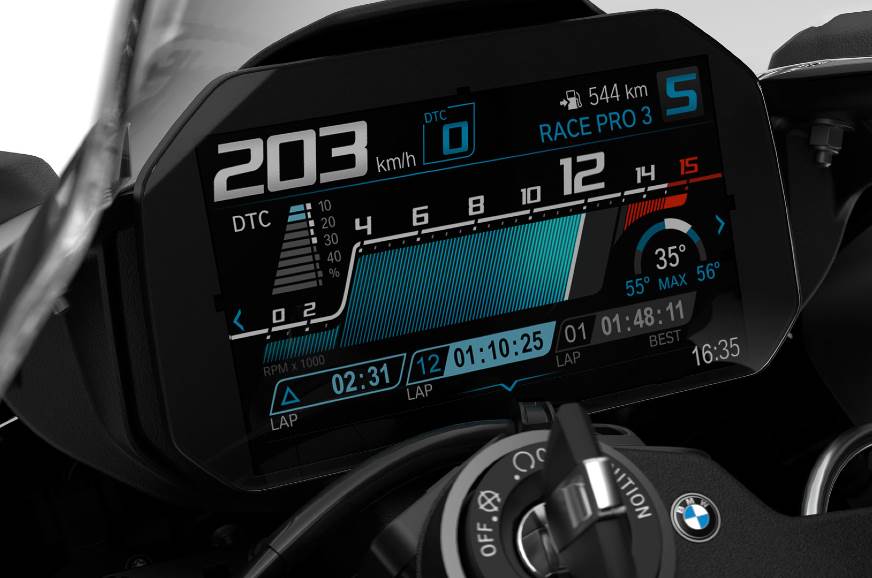BMW’s flagship superbike has received updated electronics, chassis tweaks and new aero for the 2023 model year.
BMW has unveiled the 2023 S 1000 RR, complete with updated electronics, chassis tweaks and new bodywork.
- Various changes to chassis geometry
- Now gets bigger winglets, revised tail section
- New rider assists added to electronics suite
2023 BMW S 1000 RR: chassis
The most comprehensively revised area on BMW’s flagship is the chassis, with a number of changes being made to the geometry of the S 1000 RR. For starters, BMW has changed the structure of the frame to allow for more lateral flex – when a motorcycle is leaned over, the suspension stroke doesn’t align with the bumps on the road, so it’s important for the chassis to flex in a controlled manner, to absorb road imperfections.
The steering rake angle is now slightly more relaxed, at 23.6 degrees compared to the earlier 23.1 degrees, while triple clamp offset has been marginally lowered. As a result, the trail has increased from 94mm to 99mm. Finally, the wheelbase has been slightly lengthened from 1440mm to 1458mm, and all these changes should theoretically make the Beemer a slightly slower steering machine, while increasing overall stability
2023 BMW S 1000 RR: engine
Most people would call the previous bike’s 207hp output figure adequate, but BMW went ahead and squeezed a few more ponies out of the engine anyway. Power from the 999cc inline-four motor now stands at 210hp, while torque remains unchanged at 113Nm. This increase has been made possible by changes like new intake geometry and revised intake funnels. The US-spec motorcycle continues to make the same 205hp as before, but India will receive the European-spec motorcycle, with the higher power output.
2023 BMW S 1000 RR: electronics
Mechanical changes to the engine have been accompanied by electronic updates to the rider aids, and the S 1000 RR now features a slide control system in addition to the earlier traction control system, so the bike’s computer will now allow the rear tyre to spin and step out to a certain degree before intervening. Similarly, there’s also a new Brake Slide Control function that’s been added, which allows the rear wheel to step further out of line under braking than in the past, before it’s reeled back in by the ABS.
The increased track focus is also apparent in the new Slick mode for the ABS, and a unique feature here is the Dynamic Brake Control (DBC). Essentially, after the bike detects a certain level of deceleration, DBC kicks in and cancels any accidental throttle inputs by the rider by simply ignoring the request from the ride-by-wire throttle. Since the S 1000 RR gets a bi-directional quickshifter (now optimised for smoother shifts), the need to rev-match manually doesn’t exist anymore.
2023 BMW S 1000 RR: bodywork and aero

As significant as all the changes mentioned so far are, the ones that are most likely to be noticed at first glance are the visual tweaks, which include the addition of sizeable aerodynamic winglets at the front, and revised bodywork for the tail section. BMW claims the winglets produce as much as 10kg of downforce at high speed, so they’re not quite as effective as the M 1000 RR’s (16kg), even though they do look rather alike.
2023 BMW S 1000 RR: India launch, price
Expect this updated 2023 model to make its way to the Indian market sometime next year. The bike has seen a price hike of about £700 or $900 overseas, so expect it to cost around Rs 75,000 more than the current version, which retails for Rs 19.75 lakh (ex-showroom, India).

